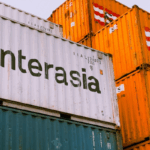In Latin America, since the formulation of the Washington Consensus in 1989, economic liberalization concerning trade and the expansion of market forces within the domestic economy has been promoted at various levels. Since then, several countries in the region have implemented reforms that proposed an opening toward free trade and foreign direct investment.
Thus, in the 1990s, governments adopted a legal system aimed mainly at offering favorable political and regulatory conditions for private and foreign investment in the mining sector to increase the countries’ revenues from the export of minerals and hydrocarbons. Brazil, Chile, Mexico, and Peru, characterized by a great variety and quantity of mineral resources, concentrated significant investments in the sector.
Among several of the economic effects of the mining boom that began in the 1990s was an increase in economic growth and higher tax revenues. One example is that Peru’s income from copper exports increased fivefold in the five years from 2001 to 2006. In that decade, mining contributed 3.5% annually to economic growth, related to the increase in demand for metals and the rise in their international price since the 1990s.
Today, the price of copper has reached an annual average of US$4.22 per pound, more than 50% higher than the average price for the 2016-2020 period. As a result, there has been an increase in the value of mining production, which has been instrumental in raising revenues for the region’s states and contributing to the rebuilding of tax revenues needed to counteract the effects of the pandemic.
However, not everyone sees mining as an engine of economic growth. In the last decade, the number and magnitude of social and environmental conflicts linked to mining activity have increased. This shows that there are still challenges, especially in those territories located around mining centers. Such social discontent, related to the potential environmental risks that mining represents, generates social conflicts that discourage investment.
This constitutes a challenge that needs to be adequately addressed. These include improving environmental policies, improving the capacity to manage revenues and income from mining, offering security to investors and the populations in the areas of influence, and ensuring that economic development in the territories correlates with people’s lives. For example, the generation of direct and indirect opportunities, job creation, development of local suppliers, and entrepreneurship are some positive effects that occur spontaneously around mining areas of influence.
Despite the challenges to overcome, Latin America has some favorable conditions for investment. According to the Fraser Institute’s ranking of the most attractive countries for exploration and investment, Chile ranks first in the region and sixth globally, with Argentina in 22nd place and Ecuador in 24th place. These factors may represent a potential opportunity to sustain the economies of Latin America in the current global context; in addition to the fact that in the coming years the use of copper will intensify in the transition to a green economy and according to projections by the International Monetary Fund (IMF), its demand will double.
It is, therefore, crucial to address the issue from several angles, to influence the creation of conditions with positive social and economic impacts, and to ensure the sector’s competitiveness to take advantage of the enormous geological potential of our countries.
* Heidy Paredes is currently an Intern at the Fundación Internacional Bases
Source: We are Innovation











